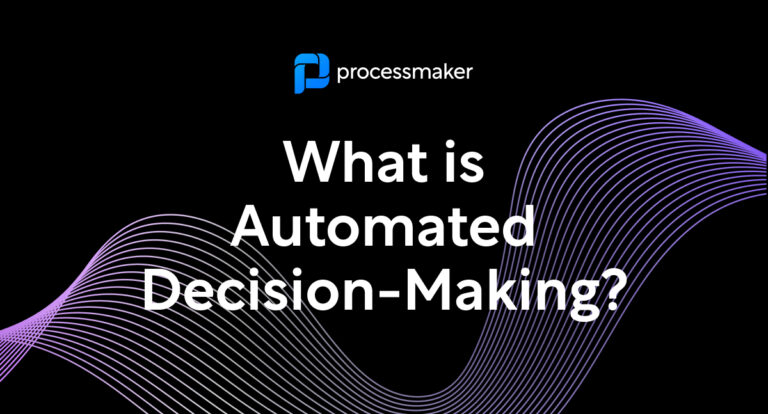There is a big push around the need for higher education to adapt to shifting technological changes and evolving student demands. As a result, it’s not a surprise that leaders in higher education are constantly searching for new approaches and technologies to meet these concerns. From virtual classroom and exam delivery to digital-first registrars and financial aid, digital transformation for higher ed is rooted in process automation across the board.
A digital transformation has already been in the works for many schools, mostly through the implementation of a learning management system (LMS) as well as legacy and point solutions. But with the COVID-19 pandemic, more schools are embracing deeper digital transformation to digitize all campus workflows and connect and extend their LMS with their existing solutions. The necessity of this approach has accelerated this form of digital transformation as social distancing practices and health safety take precedence and face-to-face interaction between school and student is not possible.
Departments across campus are ripe for digital transformation including admissions, enrollment, registrar, financial aid, facilities management and more. Automation can be utilized to enhance the student experience around everything from emergency services to accessing student advisors, updating meal plans, or even sending out notifications when a class has been cancelled due to inclement weather.
Request a demo for higher education digital process automation solution or download our whitepaper
Yet, these steps focus more on the immediate needs – which are important. However, they do not take into consideration how higher education can use transformation to meet the needs of the future. The reactive approach is not a pathway to true transformation, where operational and educational models need to become agile enough to meet both the present and future needs.
Digital transformation isn’t just about change, it is about looking at and approaching work from a new lens. Digital transformation is also about optimizing so you constantly improve the student experience. Often, this approach requires intelligent automation solutions to improve workflows that can be flexible enough to meet evolving demands. Where higher education often struggles is around focusing mainly on the process problems of today – without the scalability needed for rapid change when needed.
To illustrate, intelligent business process management (iBPMS) software can automate processes from beginning to end. iBPMS also provides a low-code platform to empower business users to rapidly create even the most sophisticated of higher education workflows.
Now, this doesn’t mean replacing all human workers. Instead, faculty, staff, and students can spend less time on repeatable paper-based processes and more time on high-value tasks. So how can you balance human and technology decisions in higher educational digital transformation? Keep reading to learn more.
Determine the areas in need of digital transformation
Many schools are rife with disparate systems. For digital transformation to occur in this environment, it has to start piecemeal. Begin with one department, learn from the successes and extend it to another department. Therefore, decide where processes can benefit from automation whether it is admissions, enrollment, registrar, financial aid, back office admin, facilities management and more.
Look at the big picture
Digital transformation does include the technological aspects, but there are other factors to consider such as whether a school has the capability to manage digitized content school wide or if technological changes should only involve designated stakeholders for now.
Digital transformation and change are two different things
Yes, digital transformation is a change but it is proactive as opposed to reactive. Higher education must then prepare stakeholders for the actions needed to transform. There will always be varying inputs about how best to achieve transformational change. Why do digital transformation strategies fail? Mostly because schools may not have the right cultural mindset to change while current operational processes are consistently prone to human error. In these cases, a broader business strategy is needed to guide digital transformation.
Decide where to focus on improvements
Would you like to improve speed, innovation, productivity or all three? Do you want to integrate data from both students and faculty? Is it vital to reduce admissions and enrollment errors? Can the athletics department benefit from optimized vendor management and scheduling? Would it be helpful if faculty can easily transition to remote work? For all of these improvements to come about, it requires the right combination of human and technology decisions.
Create an enhanced student experience from the outside in
If the objective of digital transformation is to optimize the student experience, then it requires accurate feedback from students. Ask students to share their input on strengths and weaknesses of the departments they interact with regularly. Then, identify the needs and establish priorities. Build the input into your digital transformation strategy. Look at where you can shorten processing time by automating repeatable tasks. Next, train your team members to offer more personalized assistance.
Take the inside-out approach
Identify the unique contributions your faculty and staff offer to your institution. Link their strengths to various components of the digital transformation implementation. Empower team members with iBMPS giving them more control over creating responsive and relevant workflow solutions – without any coding required. Automate menial tasks so that your teams can spend more time getting better in roles where they’re needed most. Use intelligent automation to increase productivity which can help with enrollment, retention, and both the student and faculty and staff experience. Focus on improving the processes.
Don’t forget about teamwork
Digital transformation requires team members to work together to achieve long-term objectives. It takes the entire institution. Unfortunately, many institutions still struggle to communicate and collaborate with siloed business units. So then, much of the workday is consumed with administrative tasks and “shadow work” trying to navigate through all the silos. Yet, an iBPMS solution can be deployed to work on integrating all disparate systems to extend existing legacy and point systems. Automate to remove friction from the siloed work experience.
Ensure technology decisions make sense
Be selective about where to implement technology decisions. If you want to automate responses to student inquiries, then automate the repetitive tasks to ensure faster responses. In addition, automation works for responding to frequently asked and relatively simple questions so that your staff can handle more complex inquiries. Truly, it should be about active engagement, communication, collaboration, constructive feedback, and problem solving. When intelligent automation is balanced, with the goal of digital transformation, human team members can provide more value and work on the types of tasks they were initially hired to manage.
Final thought
Digital transformation in higher education is happening quickly throughout every sector and across the globe. Higher education isn’t an island. The right balance of human and technology decisions in digital transformation can help higher education break free from the silos and become a higher and more forward-thinking institution.
Request a demo for higher education process automation solution or download our whitepaper





